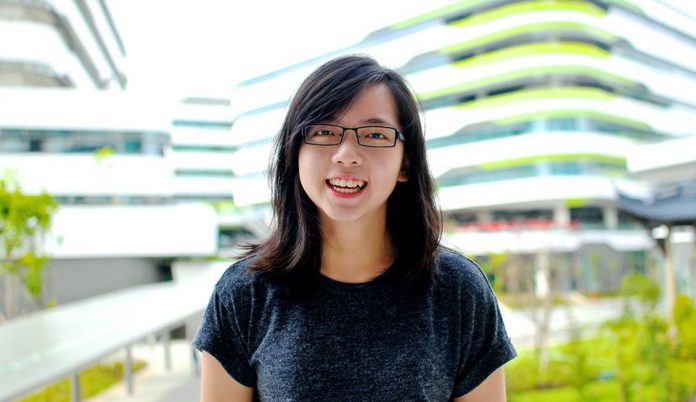So Yiing Huey, you play an instrument right? What was your motivation behind starting?
‘Yes, I do play an instrument – the french horn. I wanted to play in a band since primary school because the instruments looked so shiny and their tones were beautiful. I have been playing since Secondary 1 and I couldn’t imagine life without being in band so I thought why not set up one here in SUTD?
Initially it was set up between a few of my friends and I and I’ve got to admit, we are not always an active fifth row. It’s not easy to set up any fifth row, let alone one that requires instruments, a conductor and a big place to rehearse. When there was Prem1ere along with the heavy ASD curriculum, we had several rehearsals in and out of school and even though it was physically and mentally taxing, looking at fellow members working hard to make good music and enjoying the rehearsals really kept me going. Being in a band is an amazing thing. It’s not just about you, not about one soloist or a select group of musicians, but about everyone coming together to sound good. It takes time to build up the rapport and musical chemistry, but seeing smiles onstage during Prem1ere… was a profound moment.’
Does playing the French horn affect or influence your architectural work in any way?
‘I think it’s difficult to say how music affects or influences my work in ASD. I usually don’t have an instrument to play so I can’t really escape the hectic school life by playing the horn. But there are times in band when you play a piece and there’s so much emotion and thought going on in the music that you can’t remove yourself from the situation. Sometimes I feel the same way when looking at certain buildings, or learning new things related to architecture. These two sometimes exist in the same dimension and it helps me get a better understanding of what I’d like to design.’
Comparing all your different Core Studio projects, what do you think has changed the most since the start?
‘I think the biggest difference in my work across the past 3 terms in ASD is that I try to make my spaces more habitable now. I also try to produce as much work as possible so that eventually I can convey my design to the panel and audience through my presentation materials. Although I feel that design shouldn’t be just about producing work, it is still extremely important because convincing the panel is a lot easier with good drawings, diagrams and proper models. I really hope I can work more on the finer details and do better designs in the years to come!’
Do you have any advice for Freshmores considering ASD?
‘To the Year 1s considering ASD and Year 2s already in ASD, I hope you find architecture a good way to develop your skills on design and also an amazing way to understand people and life. I hope it is and will be an amazing journey for you (it is, for me!) and at the end of the day, whether you become an architect or not, you sure know that you’re seeing the world in a really different way. Not many people can do the same – the world is a lot more alive with an understanding in architecture.’
So to end this off, what is your favourite space in East Coast Campus?
‘This is quite a difficult question. I like the new campus, but I think it takes time to adopt a new favourite space – it’s the memories that make a space a ‘favourite’. Of course, if I had to choose a place, it’d be the open area between the school campus and hostel grand staircase – I like observing people from the canteen and my hostel unit. Sometimes you see groups of people exercising at odd hours of the day, or gardeners working hard to make the landscape happen or simply people going to and fro hostel. It’s a beautiful thing to see all these small little events coming together to form part of this big portrait called campus life.’
Y I I N G H U E Y
M A K
< Class of 2015, ASD >































